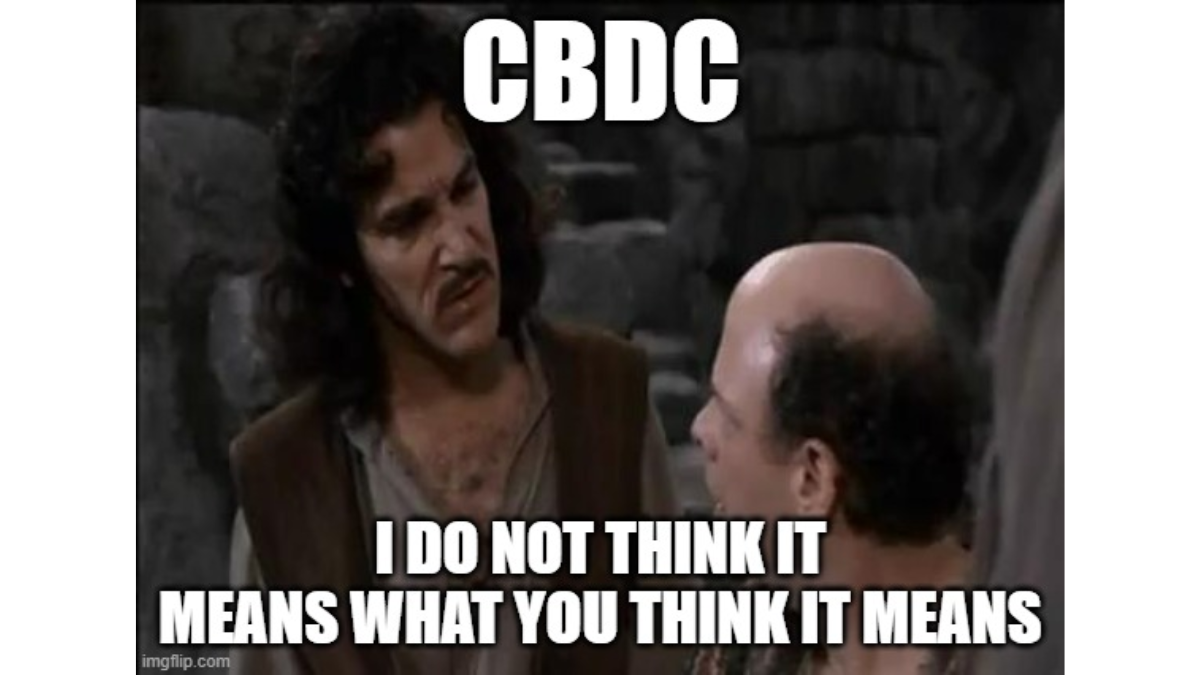
I’ve been following along the CBDC narrative for a number of years. It has been fun watching how the talking points have rapidly evolved. CBDCs seem to be getting closer to reality, driven by central banks (rather than customer demand). But there are some harder questions that are still not (in my view) adequately explored.
The supply side for “Why CBDCs” is obvious (essentially: external threats to central banks and their products) but where is the demand side? Who is going to use this product? (Financially included) People just want convenience. They have shown time and time again they don’t worry about credit risk, they just want fast/cheap payments with lots of points, interest, and incentives. Are central banks going to incentivise usage?
In a 2-tier model where banks are the distributors of CBDC what is the commercial bank’s incentive to promote CBDC or do a good job distributing it? How do they make money?
Product design: Will CBDCs be designed to be good, bad, or a middling user experience? If it’s too good, people might switch from bank deposits, to the detriment of banks who rely somewhat on deposits for cheap funding. So it can’t be too good. But if it’s too bad no one will use it, which kind of defeats the purpose, as in a crisis people won’t be equipped. What is the job description of the Chief Product Officer: Make something that everyone uses every now and again, but not too much?
Interoperability – what does this mean? What would a CBDC do that today’s systems can’t do? What is an “interoperable financial backbone” if not a wholesale RTGS which exists today in plenty of countries, that interoperates with banks that interoperate with businesses and people? It’s regulation, not technology, that prevents payments moving smoothly around the place.
CBDC for cross border payments? Yes cross border payments can be expensive but I’m not sure it’s the central bank’s problem. I’ve never seen a central bank’s mandate to make it easy/cheap for people to send their money overseas or to convert it into someone else’s currency. The easiest way to make cross border payments cheaper is to let foreign banks onto your domestic RTGS. But this is rarely done. How would CBDCs make FX cheaper for end users? What are the mechanisms?
Financial inclusion. How would a CBDC be more financially inclusive than the gamut of payment systems we have today? Eg Venmo, Wechat Pay, m-Pesa, none of which are CBDCs (Wechat is the closest but still not quite yet fully a CBDC). Some people are excluded from the formal system because they don’t pass compliance tests (no adequate proof of name, address) – will they be able to use CBDC? Will CBDCs manage to avoid AML/KYC regs?
I’m sure there are more questions too but they are just some starters 🙂
- SEO Powered Content & PR Distribution. Get Amplified Today.
- PlatoAiStream. Web3 Data Intelligence. Knowledge Amplified. Access Here.
- Minting the Future w Adryenn Ashley. Access Here.
- Buy and Sell Shares in PRE-IPO Companies with PREIPO®. Access Here.
- Source: https://bitsonblocks.net/2020/09/16/cbdcs-asking-the-hard-questions/
- :has
- :is
- :not
- :where
- a
- Able
- About
- address
- adequately
- again
- along
- an
- and
- ARE
- around
- AS
- avoid
- Bad
- Bank
- bank deposits
- Banks
- BE
- because
- been
- Bits on Blocks
- Blocks
- border
- businesses
- but
- by
- CAN
- CBDC
- CBDCs
- central
- Central Banks
- cheap
- cheaper
- chief
- chief product officer
- closer
- commercial
- compliance
- convenience
- convert
- countries
- credit
- crisis
- Cross
- Currency
- customer
- Demand
- deposits
- description
- Design
- designed
- distributing
- distributors
- do
- does
- Domestic
- done
- Dont
- driven
- easiest
- Else’s
- end
- equipped
- essentially
- Every
- everyone
- evolved
- excluded
- exists
- expensive
- experience
- Explored
- external
- financial
- financially
- following
- For
- foreign
- formal
- from
- fully
- fun
- funding
- FX
- getting
- going
- good
- good job
- Hard
- Have
- How
- HTTPS
- if
- in
- Incentive
- Incentives
- included
- inclusion
- Inclusive
- interest
- interoperate
- into
- IT
- Job
- just
- Kind
- M-Pesa
- make
- make money
- manage
- mandate
- mean
- mechanisms
- might
- model
- money
- more
- moving
- much
- my
- name
- NARRATIVE
- never
- no
- now
- number
- obvious
- of
- Officer
- on
- ONE
- or
- overseas
- pass
- Pay
- payment
- Payment Systems
- payments
- People
- Place
- plato
- Plato Data Intelligence
- PlatoData
- Plenty
- points
- prevents
- Problem
- Product
- Products
- promote
- proof
- purpose
- Questions
- rapidly
- rather
- Reality
- Regulation
- rely
- Risk
- RTGS
- seem
- seen
- send
- shown
- side
- smoothly
- So
- some
- Someone
- something
- somewhat
- starters
- Still
- supply
- Switch
- system
- Systems
- talking
- Technology
- tests
- than
- that
- The
- their
- There.
- they
- this
- threats
- time
- to
- today
- today’s
- too
- Usage
- use
- User
- User Experience
- users
- Venmo
- View
- want
- watching
- Way..
- we
- WeChat Pay
- What
- What is
- which
- WHO
- wholesale
- will
- with
- worry
- would
- years
- yes
- yet
- Your
- zephyrnet









